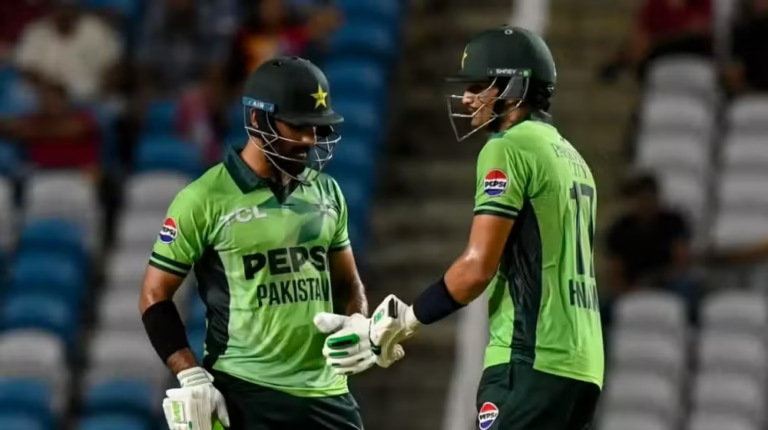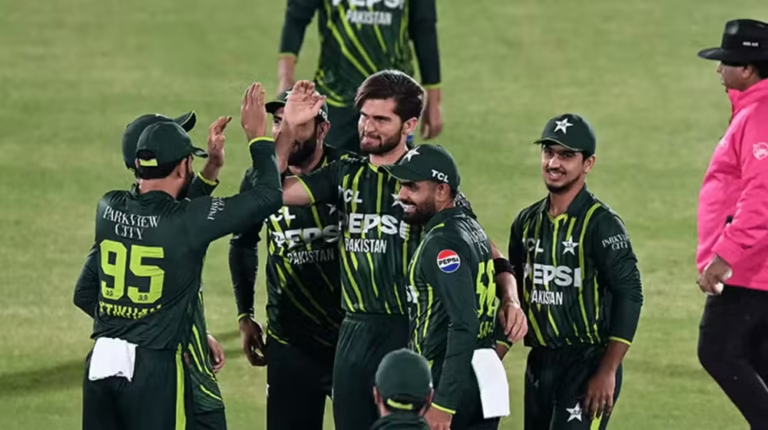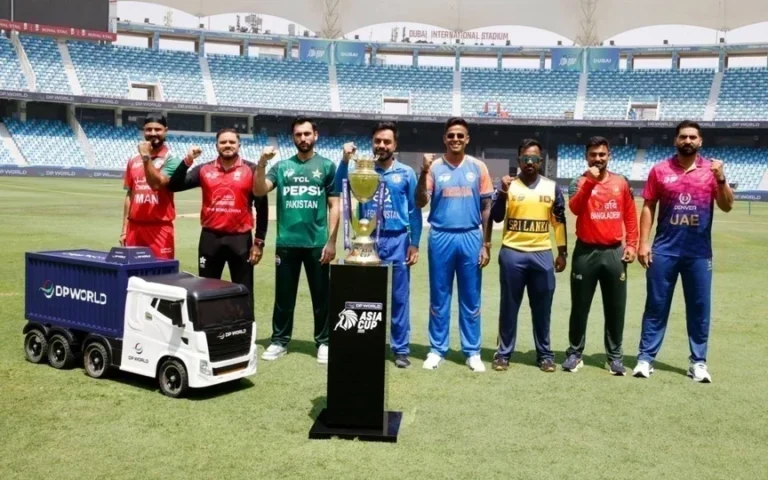The Asia Cup 2025 is set to light up the cricketing world with its fast-paced T20 International (T20I) format, offering fans and teams alike a thrilling spectacle from September 7 to September 17, 2025, in the United Arab Emirates (UAE). More than just a regional showdown, this tournament serves as a vital stepping stone to the 2026 ICC Men’s T20 World Cup, co-hosted by India and Sri Lanka in February-March 2026. With top Asian teams and emerging qualifiers battling it out, the Asia Cup 2025 promises high-octane cricket and critical preparation for the global stage.
Asia Cup 2025
The Asia Cup 2025 will feature eight teams, blending cricketing giants with rising associate nations. The lineup includes:
- India (defending champions)
- Pakistan
- Sri Lanka
- Bangladesh
- Afghanistan
- United Arab Emirates (UAE)
- Oman
- Hong Kong
The tournament adopts a dynamic structure: two groups of four teams each, followed by a Super Four stage and a grand final. Here’s the group breakdown:
- Group A: India, Pakistan, Bangladesh, Hong Kong
- Group B: Sri Lanka, Afghanistan, UAE, Oman
Expect 13 to 15 matches, including marquee clashes like India vs. Pakistan on September 7 and a potential rematch in the Super Four on September 14. Hosted in the UAE, this edition promises intense competition and a perfect warm-up for the T20 World Cup.
Why the T20 Format Matters for Asia Cup 2025
The choice of the T20I format for the Asia Cup 2025 is strategic, aligning perfectly with the 2026 T20 World Cup. This format isn’t just about entertainment—it’s a proving ground for skills and strategies that will define success on the global stage.
Alignment with the T20 World Cup Format
T20 cricket demands aggression, precision, and adaptability. By mirroring the World Cup’s format, the Asia Cup allows teams to hone T20-specific skills—think explosive batting in the powerplay, death-over bowling mastery, and sharp fielding under pressure. For example, India might tweak their batting order, while Pakistan could refine their bowling combinations to suit the format’s demands.
Building Momentum for the World Cup
Momentum is everything in T20 cricket. For powerhouses like India (defending both Asia Cup and T20 World Cup titles), Pakistan, Sri Lanka, and Bangladesh, the Asia Cup is a chance to hit peak form. India will aim to reinforce their dominance, while Pakistan and Sri Lanka look to iron out inconsistencies and build a cohesive unit ahead of 2026.
Team Preparation and Momentum: A Crucial Dress Rehearsal
With the T20 World Cup just five months away, the Asia Cup 2025 is a golden opportunity for teams to simulate high-stakes scenarios and fine-tune their game plans.
Experimenting with Line-ups and Strategies
The tournament’s multi-match structure lets teams test new combinations. India might trial emerging openers or middle-order finishers, while Bangladesh could experiment with spin-heavy attacks. These experiments help teams prepare for the World Cup’s knockout intensity, where adaptability is key.
Assessing Player Form and Fitness
Form and fitness are non-negotiable for World Cup success. The Asia Cup offers a real-time assessment of key players—think Jasprit Bumrah’s pace for India or Babar Azam’s consistency for Pakistan. Selectors will use these performances to lock in their 2026 squads.
Exposure for Qualifiers: A Stepping Stone for Associate Nations
The inclusion of associate teams—UAE, Oman, and Hong Kong (qualified via the 2024 ACC Men’s Premier Cup)—adds depth to the Asia Cup. For these nations, it’s more than a tournament; it’s a launchpad.
Preparing for World Cup Qualification
With three Asia-East Asia-Pacific slots up for grabs in the 2026 T20 World Cup qualifiers, the Asia Cup is a critical testing ground. Facing full members like India and Sri Lanka gives these teams a taste of elite competition, sharpening their skills for the qualification process.
Bridging the Gap with Full Members
Matches against top-tier sides expose associate players to world-class standards. This experience is invaluable for their growth, helping them close the gap and compete more effectively in the T20I arena.
Tactical and Strategic Refinement: Mastering the T20 Game
T20 cricket is a chess match at breakneck speed. The Asia Cup’s format—group stage, Super Four, and final—mirrors the World Cup’s intensity, making it an ideal platform for tactical sharpening.
Managing High-Scoring Run Chases and Powerplay Overs
Success in T20 often hinges on powerplay aggression and chase management. Teams can use the Asia Cup to perfect these elements—whether it’s deciding when to attack or how to defend totals on UAE’s flat tracks.
Adapting to Varying Pitch Conditions
The UAE’s pitches—batsman-friendly early on, spinner-friendly later—offer a unique challenge. Teams must adapt quickly, a skill that will pay dividends on the diverse surfaces of India and Sri Lanka in 2026.
Venue and Condition Familiarity: Preparing for Neutral Venues
Originally slated for India, the Asia Cup shifted to the UAE due to India-Pakistan geopolitical tensions. This change adds a layer of complexity—and opportunity—to team preparations.
Adapting to Neutral Venues
Neutral venues level the playing field, a scenario teams will face in the World Cup (e.g., India-Pakistan matches in Sri Lanka). The Asia Cup lets teams practice thriving without home advantage, building resilience for 2026.
Understanding Pitch and Weather Conditions
UAE’s hot, humid climate and evolving pitches test endurance and strategy. Teams can use this to prepare for similar conditions, ensuring they’re ready for whatever the World Cup throws their way.
Player Development and Selection: A Stage for Emerging Talent
The Asia Cup 2025 isn’t just about teams—it’s a showcase for individuals vying for World Cup spots.
Opportunities for Emerging Players
Young talents—like India’s Yashasvi Jaiswal or Afghanistan’s Noor Ahmad—can seize this stage to shine. A standout performance could fast-track them into World Cup contention.
Cementing Spots for Established Stars
For veterans like Virat Kohli or Shaheen Afridi, the Asia Cup is a chance to prove their mettle. Consistent runs or wickets here could lock in their roles as team linchpins for 2026.
Conclusion: A Pivotal Stepping Stone for the T20 World Cup
The Asia Cup 2025 is more than a regional trophy—it’s a launchpad to the 2026 T20 World Cup. From refining T20 tactics to testing squads and adapting to neutral venues, this tournament equips teams with the tools for global success. Whether it’s the electric India-Pakistan rivalry or the rise of associate nations, the Asia Cup will set the tone for Asian cricket’s World Cup journey.
As the UAE lights up with T20 action, fans and analysts alike will watch closely. The lessons learned here will echo in India and Sri Lanka come 2026—who will rise to the challenge?






